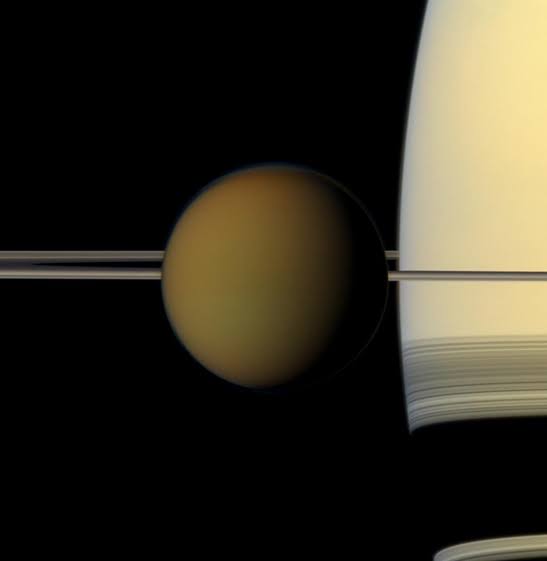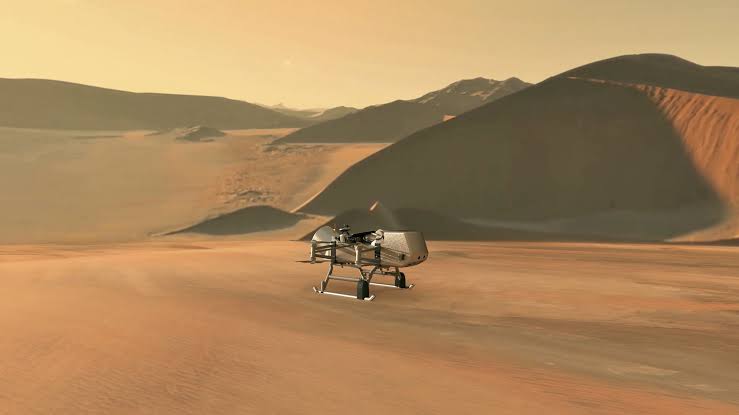For many years, humans have been intrigued by the idea of discovering alien life. From popular science fiction stories to rigorous scientific research, the possibility of encountering life beyond Earth has inspired us to explore the farthest corners of the universe. We have utilized advanced technology to explore the surface of Mars, scanned distant stars for habitable planets, and sent out messages in the hopes of initiating contact with intelligent life.
Our search for extraterrestrial life is fueled by not only our inquisitive nature but also our profound desire to comprehend our place in the universe and to expand our understanding of the potential for life beyond our planet. Although the discovery of alien life may still be a distant dream, the pursuit of this quest continues to drive us to explore and challenge the limits of our knowledge and abilities.

Titan’s Importance in the Search for Extra-terrestrial Life
Titan, Saturn’s largest and a richly organic moon, is a unique celestial body in our solar system. It is the only known moon with a thick atmosphere, and its surface is shrouded by a dense orange haze. The atmosphere is mostly composed of nitrogen, with smaller amounts of methane and other hydrocarbons.
These hydrocarbons are of interest to scientists, as they suggest the presence of organic molecules, which are the building blocks of life. The moon also has lakes and seas made of liquid methane and ethane, which are the only known bodies of liquid on a solid surface other than Earth.
Dragonfly Mission to Explore Titan:
NASA is embarking on an exciting new mission, called Dragonfly, to explore Titan. The mission will feature an innovative 8-bladed rotorcraft that will land on Titan and explore dozens of intriguing sites. Dragonfly will study the moon’s unique chemistry and geology, and sample its surface and atmosphere in search of clues to the origins of life.
Scheduled to launch in 2027 and arrive at Titan in 2034, Dragonfly is set to be one of the most ambitious space exploration missions to date, promising to significantly advance our understanding of this enigmatic moon and the potential for life beyond Earth.
Dragon fly and Its Cutting Edge Technology:
The Dragonfly mission will be an extraordinary feat of space exploration, lasting for 2.7 years, or 32 months. One of the most exciting aspects of the mission is the innovative flying capabilities of Dragonfly, which will utilize Titan’s dense nitrogen-based atmosphere to fly like a drone.
This multi-rotor vehicle will explore the diverse environments of Titan, providing repeatable and targeted access to surface materials. Dragonfly is the first-ever vehicle to fly its entire science payload to new locations for scientific exploration. This remarkable achievement opens up endless possibilities for future space missions, and may potentially revolutionize the way we explore other celestial bodies in our solar system and beyond.
A cutting-edge instrument called the Dragonfly Mass Spectrometer (DraMS) will be deployed to analyze the moon’s unique chemistry. DraMS is designed to identify and measure the composition of molecules found in Titan’s atmosphere and surface. By doing so, scientists hope to gain a better understanding of the complex chemistry that may be present on this intriguing moon.
Dragonfly mission on Titan will use the Drill for Acquisition of Complex Organics(DrACO) to collect samples less than a gram in size, which will be analyzed by the Dragonfly Mass Spectrometer (DraMS). Samples will be brought inside the lander’s main body and irradiated or vaporized in an oven to be measured by DraMS. The mass spectrometer will help scientists analyze the chemistry of Titan’s surface and gain insights into the origins of life and the formation of our solar system.
This mission will explore Titan’s atmospheric and surface properties, subsurface ocean, and areas where water and complex organic materials once existed together for tens of thousands of years. These findings will shed light on the origins of life in our solar system and offer insights into the possibility of extraterrestrial life.
Conclusion
In conclusion, the Dragonfly mission to Titan represents a bold and exciting leap forward in our understanding of the universe and the search for life beyond our planet. The mission’s innovative technology and instruments, including the first multi-rotor vehicle for science on another planet, promise to unlock new insights about Titan’s composition, atmosphere, and potential for pre-life chemistry. With each passing year, we continue to push the boundaries of our knowledge and capabilities, and the Dragonfly mission is a shining example of humanity’s unyielding quest for discovery and exploration.
As we eagerly await the mission’s arrival, we can only imagine the incredible discoveries and breakthroughs that await us and the new horizons they will open up for us in the years and decades to come.
